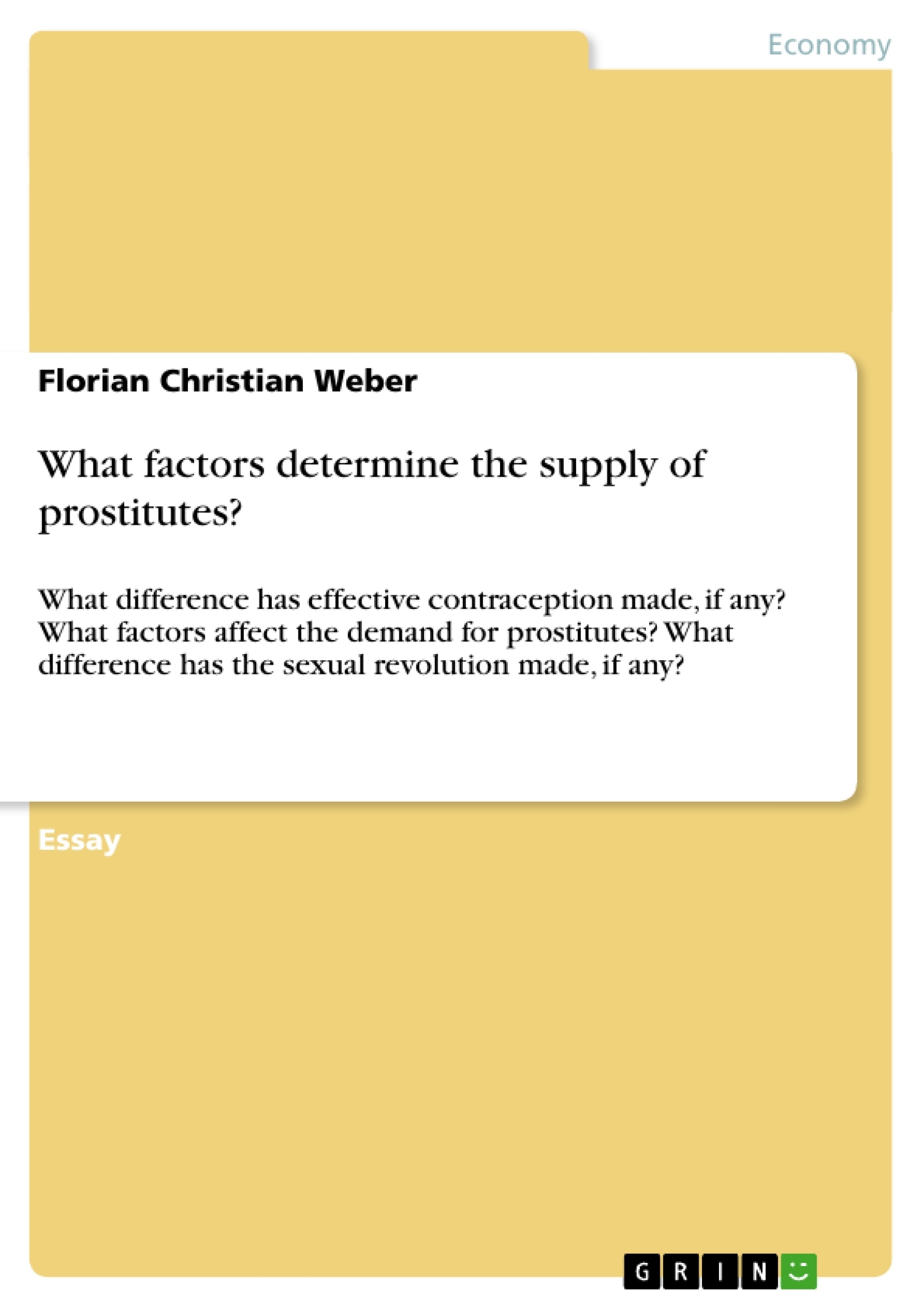Prostitution is meant to be the oldest profession, whether this is true or not, cannot really be distinguished, however the fact is that this phenomenon can be observed since ages.
For example Jesus saved a prostitute from being lapidated and forms of commercial sex can be observed in the times of the old Greeks and Romans (Posner 1992). In the medieval ages, in Germany, prostitution was organised by guilds, regulated by the authorities. It was proscribed, however, not denied or oppressed. Even the brothels were often property of the city (Hiscott: 2001). Also in other countries at this age, prostitution flourished. A major reason was that there were hordes of bachelors (Posner 1992)
After the breakout of syphilis in Europe and when the reforming theology gained more influence prostitution was oppressed. This repression lasted till the 19th century and with the industrial revolution the number of prostitutes increased rapidly. In Germany at the beginning of the First World War about 330,000, which is about 1% of the female population, were prostitutes (Reichel and Topper 2003).
Nowadays the number of prostitutes is higher in less developed countries however not insignificant in developed ones (Philipson and Posner 1993). The number of prostitutes in Germany is estimated by the government at 150,000 (Morell 1998) and according to the Financial Times 25,000 prostitutes work in Amsterdam.
This essay will discuss the supply and demand for prostitutes. Initially, some essential information about prostitution is presented. Secondly, the supply of prostitutes is discussed in the sense of what determines it and if effective contraception had any influence on it.
Thirdly the demand side of prostitution is examined with respect to the influence of the sexual revolution. Finally, I give concluding remarks about the topic.
Inhaltsverzeichnis (Table of Contents)
- I. Introduction
- II. Essential Information
- III. Supply
- a. Supply model
- IV. Demand
- a. Demand Model
- V. Conclusion
Zielsetzung und Themenschwerpunkte (Objectives and Key Themes)
This essay aims to analyze the economic factors determining the supply and demand for prostitution, exploring the historical context and the impact of societal changes on the phenomenon.
- The factors influencing the supply of prostitutes, including the role of marriage, job opportunities, and the impact of effective contraception.
- The factors affecting the demand for prostitutes, particularly the role of societal norms, sexual revolution, and the availability of substitutes.
- The historical evolution of prostitution, including its regulation and oppression in different periods.
- The economic implications of prostitution, including wage rates, potential earnings, and the impact of supply and demand dynamics.
- The social and cultural context of prostitution, including the roles of gender, marriage, and societal expectations.
Zusammenfassung der Kapitel (Chapter Summaries)
The introduction provides an overview of the historical development of prostitution, highlighting its presence throughout different eras. It also establishes the scope of the essay, focusing on the economic factors influencing supply and demand.
Chapter II delves into essential information about prostitution, defining the term and outlining different types of prostitution. It also discusses the potential earnings associated with the profession and the typical demographics of clients.
Chapter III explores the supply side of prostitution, examining factors that influence a woman's decision to become a prostitute. This includes the role of marriage, job opportunities, and the impact of effective contraception. The chapter also discusses the potential impact of polygamy on the supply of prostitutes.
Schlüsselwörter (Keywords)
The essay focuses on the economic factors influencing the supply and demand of prostitution. Key terms include: supply and demand, prostitution, marriage, job opportunities, contraception, sexual revolution, societal norms, wage rates, and potential earnings. The essay also explores the historical evolution of prostitution and its social and cultural context.
- Quote paper
- MA (hon.) Economics Florian Christian Weber (Author), 2004, What factors determine the supply of prostitutes? , Munich, GRIN Verlag, https://www.grin.com/document/89385




